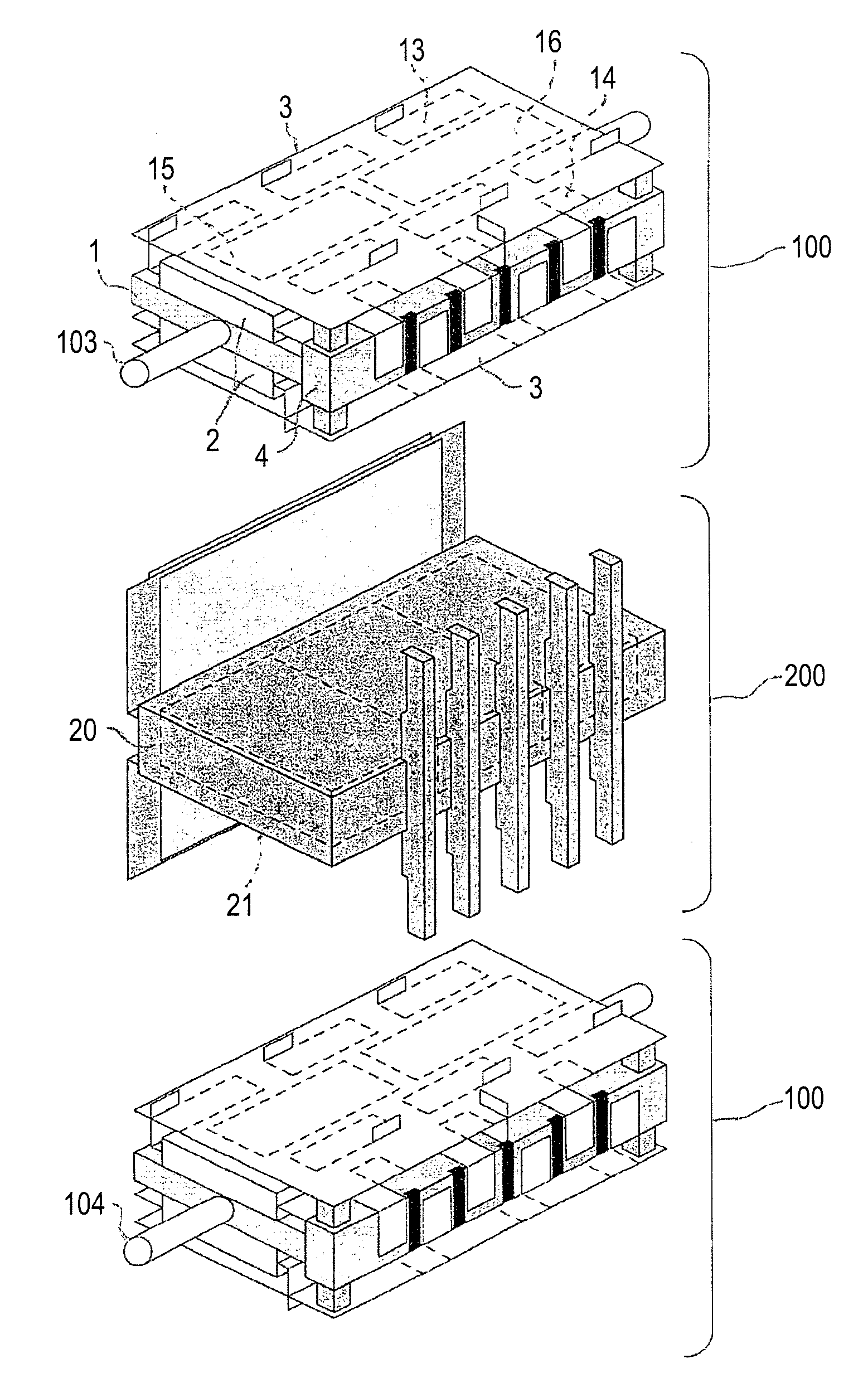Power converter
a power converter and power conversion technology, applied in the direction of cooling/ventilation/heating modification, semiconductor/solid-state device details, semiconductor devices, etc., can solve the problems of difficult downsizing of the power converter, deteriorating power conversion efficiency, and troublesome connection between the semiconductor module and the control board
- Summary
- Abstract
- Description
- Claims
- Application Information
AI Technical Summary
Benefits of technology
Problems solved by technology
Method used
Image
Examples
first embodiment
[0065]An overall configuration according to a first embodiment of the invention will be described with reference to FIGS. 1 and 2. In a power converter 400 according to a first embodiment, one power assembly (ASSY) 100 is disposed on each surface of a smoothing capacitor unit 200, and housed in a housing 300. In the power assembly (ASSY) 100, three semiconductor modules 2 and one control board 3 are placed on each surface of a cooler 1. The power converter having four three-phase orthogonal power conversion functions is configured by the 12 semiconductor modules 2, the two coolers 1, the four control boards 3, and the one smoothing capacitor unit 200 in total. First to fourth three-phase outputs 107A, 107B, 107C, and 107D are led from the power converter. Each of the coolers 1 is provided with a cooling water inlet 103, and a cooling water outlet 104 connected to the cooling water inlet 103 through a U-turn flow passage 105.
[0066]A detailed basic configuration of the power assembly ...
second embodiment
[0091]The entire configuration according to a second embodiment of the invention is illustrated in FIGS. 18 and 19. A power converter 400 according to the second embodiment is configured to arrange the smoothing capacitor unit 200 on one side of the power assembly 100 housed in a housing 300. The power converter 400 includes a DC input 101, a three-phase output 107, a cooling water inlet 103, and a cooling water outlet 104. This embodiment exemplifies the power converter having only one large-capacity three-phase orthogonal power conversion function based on the power assembly of the first embodiment. A description will be given of a configuration that the large-capacity power conversion function is realized on the basis of the layout of the smoothing capacitor unit and the power assembly of the first embodiment when only one power assembly is provided.
[0092]A basic configuration of the power converter according to the second embodiment of the invention will be described with refere...
third embodiment
[0113]Subsequently, a configuration according to a third embodiment of the invention will be described. The power converter according to the third embodiment is an example in which the switching element mounted on the semiconductor module according to the second embodiment is replaced with a wideband gap element. In the wideband gap element such as SiC, because the high temperature operation and the high speed switching are enabled, the heat resistance and the noise resistance of the peripheral parts are problematic. In this embodiment, a configuration for improving the heat resistance and the noise resistance of the peripheral parts will be described on the basis of the power converter according to the second embodiment. This embodiment is applied to not only the wideband gap element, but also the power converter according to the first and second embodiments.
[0114]The basic configuration according to the third embodiment of the invention will be described with reference to FIGS. 35...
PUM
 Login to View More
Login to View More Abstract
Description
Claims
Application Information
 Login to View More
Login to View More - R&D
- Intellectual Property
- Life Sciences
- Materials
- Tech Scout
- Unparalleled Data Quality
- Higher Quality Content
- 60% Fewer Hallucinations
Browse by: Latest US Patents, China's latest patents, Technical Efficacy Thesaurus, Application Domain, Technology Topic, Popular Technical Reports.
© 2025 PatSnap. All rights reserved.Legal|Privacy policy|Modern Slavery Act Transparency Statement|Sitemap|About US| Contact US: help@patsnap.com



